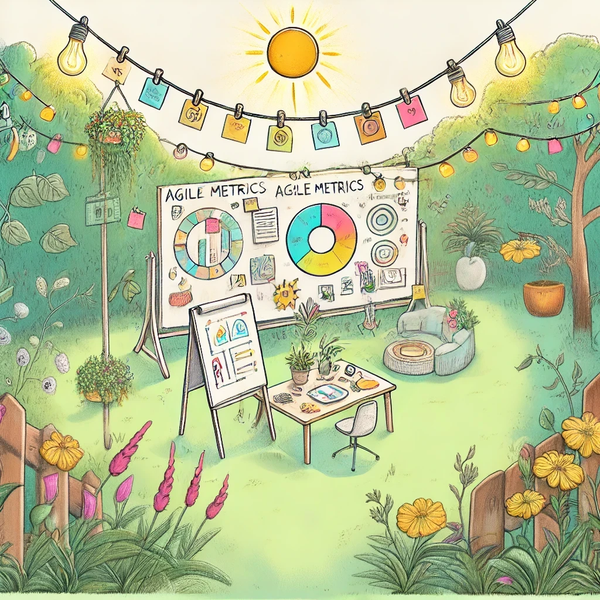I truly believe that aha-moments are a way for our mind to express milestones of learning. It is as if condensed learning or experience ends up becoming a piece of a puzzle, which finally finds its place in the greater scheme of things. An awesome feeling. A feeling that I want you to have, after reading this post.
But first, let me tell you a little story about how I stumbled upon my aha-moment for agile metrics.
Aha, agile metrics!
In 2017, I was fortunate enough to join a company that was about to embark on a multi-year journey of implementing agile ways of working, innovative practices and a deep focus on digital growth and product development. The company was small and nimble, but had existing revenue and 1 million customers.
My task? Enable a data-driven, learning and performance-oriented culture.
I made sure that we had the right data to support, change or make decisions. Slowly, we started going from gut feelings to insights, because the importance of measurements and analytics became more and more apparent. I knew the culture in the organization changed, when it was no longer me that went with data and insights to our software engineers, product owners, agile leads and managers. Instead, they started coming to me.
This is where my aha-moment started forming. I realized that in the pursuit of measuring outcomes and whether the features we developed had any value to our customers and business, we were forgetting the other side of the coin. We didn’t have metrics in place to measure continuous improvements of the product teams.
Think about a group of hikers, who wants to hike a hill. It has to be a hill that provides the best view of the nature. We knew exactly, through data and analytics, which hill to hike and if each step was in the right direction. What we didn’t know was if we were carrying too much luggage that slowed us down, if we would hit a roadblock that would force us to find another path, if there was a bus around the corner or if we could save ourselves a lot of trouble by taking a helicopter.
Knowing the destination is not enough. We need to get there, and we need to get there as efficiently as possible, especially in a competitive environment. We need to unlock the true potential of our engineering teams building great products, and we need to know when we are successful in doing so.
This line of thinking lead to my aha-moment, and it has driven me to use agile metrics to measure continuous improvements as a portfolio and product manager at some of the largest companies in the world.
Agile metrics to measure continuous improvements
In my opinion, continuous improvement is the most important agile principle. A team focused on improving over time will find a way to continuously deliver value, reflect on their own potential as a team and become more effective. Unfortunately, efforts on continuously improving the team and its processes often run into the sand. We try to improve some things, then our focus shifts, we fall into old habits and we measure our improvements through subjective opinion. After some months, we do not have a reliable and objective way to look back and point to the proof that shows our improvements.
We can change this behavior with agile metrics, especially when we keep the following iterative approach in mind:
- We create and measure a baseline of what we are trying to improve.
- We deploy the changes that we think will have an impact.
- We measure the actual impact compared to the baseline.
In short, I want you to be able to measure your continuous improvements. I want you to be able to show it to others and track things over time, so you know when it goes right and when it doesn't. That does not mean that everything must become a KPI or a target, because when a measure becomes a target, it often ceases to be a good measure (Goodhart's law). And metrics are not the only ingredients to continuous improvements and value delivery. It is a tool and an enabler. If you, your team and your organization are not using agile metrics, then you are missing out.
Let’s change that.
Start your agile metrics journey
I hope that this post helped give you an aha-moment based on your existing experience and learnings, or at least helped form an aha-moment. I want to dive into the world of agile metrics with you, and show you why, how and what. And as a simple disclaimer, agile metrics are much, much more than burndown charts and velocity graphs.
The best part? You don’t need to be a data scientist or analyst to be able to build baselines and measure the impact. You just need to be interested in measuring continuous improvements for teams. Even though this is often the responsibility of scrum masters, delivery managers, agile leads or engineering managers. The title doesn’t matter, what matters is that you want to use agile metrics as an enabler for continuous improvements.

